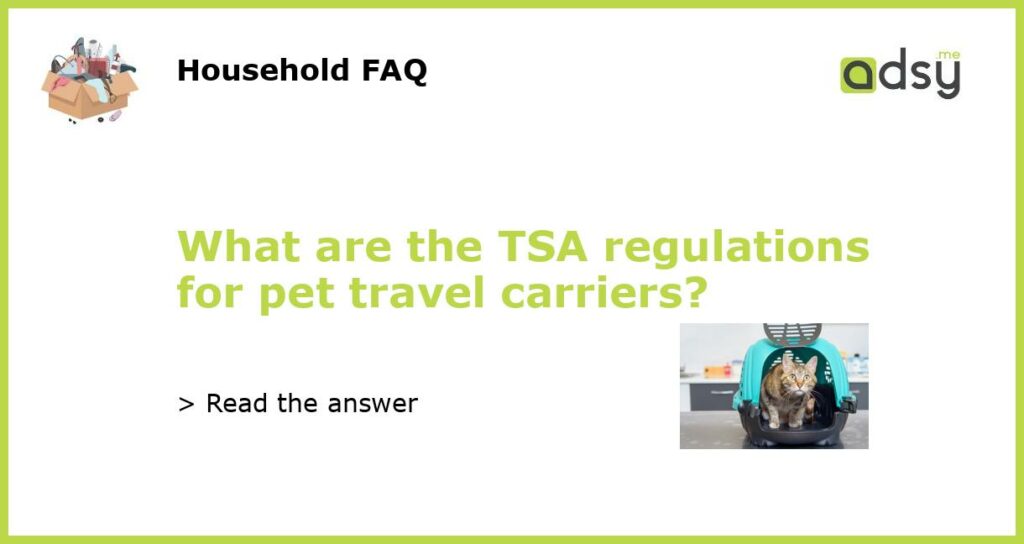TSA Regulations for Pet Travel Carriers
Traveling with pets can be stressful, not only for the owners but also for the furry friends. If you are planning to fly with your pet, it is important to be aware of the TSA regulations for pet travel carriers. These regulations ensure the safety and well-being of the pets during their journey. Here are the key TSA regulations you need to know:
Size and Type of Carrier
The TSA requires that pet travel carriers be of a certain size and type to ensure the comfort and safety of the animals. The carrier should be spacious enough for the pet to stand, turn around, and lie down in a natural position. Additionally, the carrier should have proper ventilation to ensure good airflow for the pet. Soft-sided carriers made of water-repellent, washable materials are recommended, as they are more comfortable for the pet and easier to handle during security checks.
Carrying Methods
The TSA allows two main carrying methods for pets: in-cabin and cargo. In-cabin pets are small enough to be carried inside the cabin with their owners. They must be able to fit under the seat in front of the owner and be in an approved carrier. On the other hand, cargo pets are larger animals that are transported in the cargo hold of the aircraft. It is important to note that different airlines have varying regulations and restrictions regarding in-cabin and cargo pet travel, so it is essential to check with your airline before booking your flight.
Security Screening
Pet travel carriers are subject to security screening by the TSA. When going through the security checkpoint, you will be required to take your pet out of the carrier and carry them in your arms while the carrier goes through the X-ray machine. Some airports may also require you to remove your pet’s collar and leash for the screening process. This ensures that the carrier does not contain any prohibited items or substances and helps the TSA officers get a clear view of the contents inside the carrier.
Documentation and Identification
When traveling with a pet, it is important to have the necessary documentation and identification. The TSA does not require pet owners to provide any specific paperwork or identification for domestic travel within the United States. However, it is a good idea to carry a copy of your pet’s vaccination records, as some airlines or destination states may require proof of vaccination. Additionally, make sure your pet wears a secure collar with identification tags that include your contact information.
Special Considerations for Service Animals
Service animals, such as guide dogs or emotional support animals, are subject to different regulations compared to regular pets. These animals are allowed to travel with their owners in the cabin, regardless of carrier size or type restrictions. However, additional documentation and identification may be required to prove the animal’s status as a service animal. It is important to contact your airline in advance to understand their specific requirements for traveling with a service animal.






